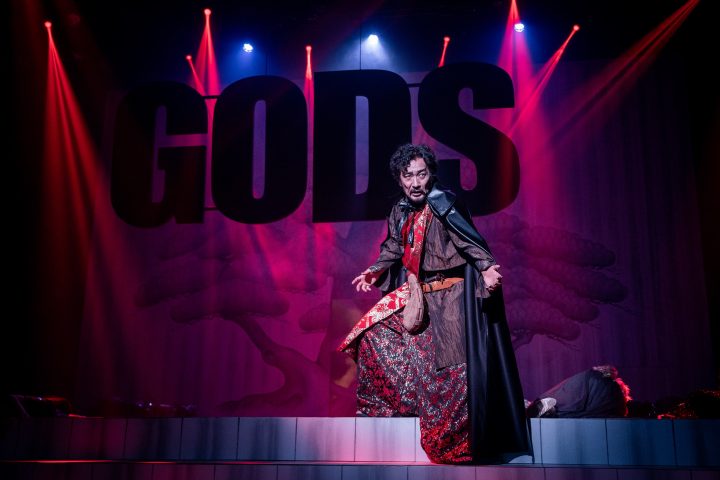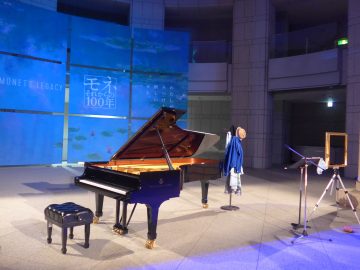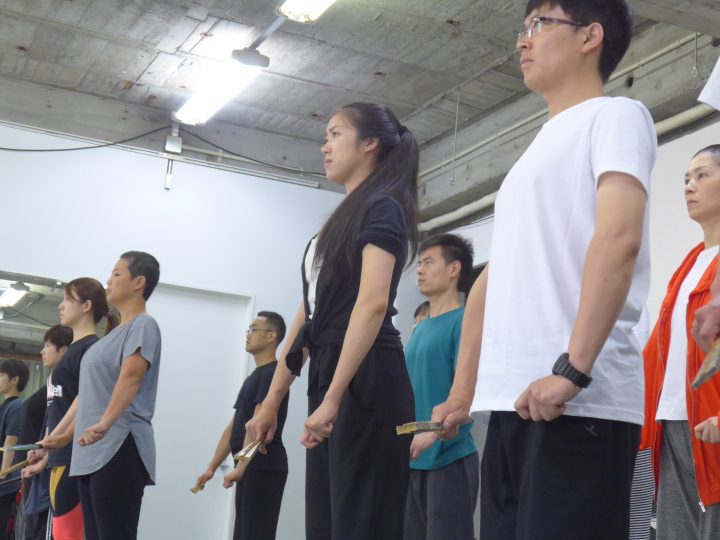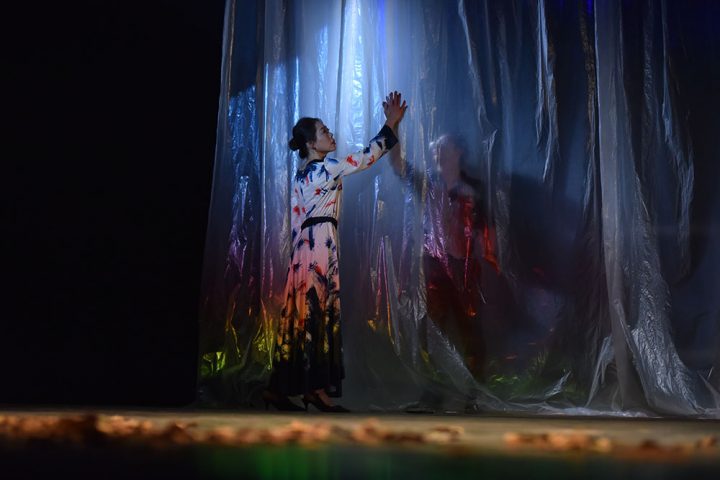The outdoor play "Santomo's Sail" is about to be performed, and we're reporting on the rehearsal studio! "Dream chaser" Sanetomo has crossed 800 years of time and space and is now reborn in Hadano!!
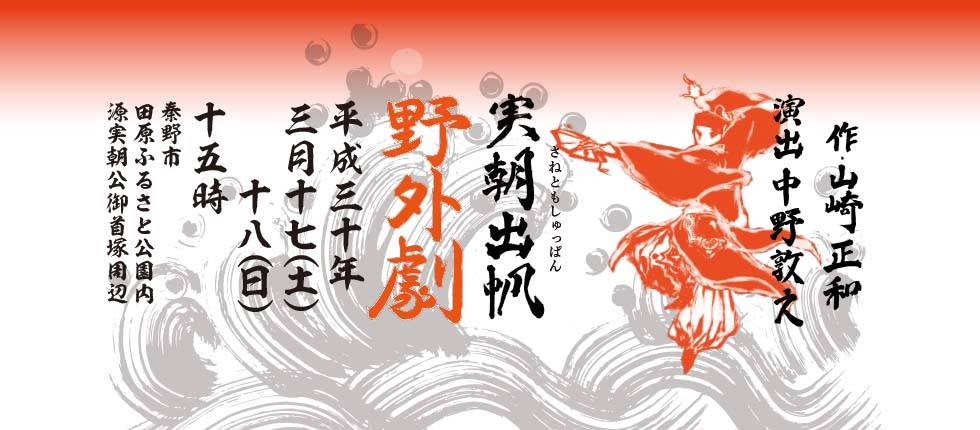
<Date>
"Satomo Sets Sail"
This is a masterpiece (1973) by Masakazu Yamazaki (1934-), a playwright and critic known for his critical essays such as "The Dramatic Japanese" and "The Soft Individualist Japanese." It depicts how Minamoto no Sanetomo, the third Shogun of the Kamakura Shogunate, pins his hopes on a shipbuilding business amid a political struggle with the Hojo clan and the Imperial Court.
<Profile>
"Atsuyuki Nakano"
Born in 1981. Director and representative of the Kara Seminar Theatre Company. Upon entering Yokohama National University, he studied under Kara Juro, who was a professor at the time. In 2005, with the founding of the Kara Seminar Theatre Company, he was in charge of directing a production produced by the New National Theatre, setting a new record as the youngest director to be featured by the theatre. Since then, he has performed many of Kara Juro's old and new works both in Japan and overseas. He has gained many fans with his unprecedented directing techniques. He is also skilled at outdoor performances, and is involved in planning and managing theatrical events, including producing the performance environment.
"Shimizu Yuyoji"
Starring as Minamoto no Sanetomo. Born in 1992 in Hadano, Kanagawa Prefecture. 9th batch of students from the New National Theatre Drama Training School. Shortly after graduating, he appeared in "Henry IV" at the New National Theatre, sponsored by the Agency for Cultural Affairs' Arts Festival, to commemorate the 400th anniversary of Shakespeare's death. He gave a passionate performance in a major role in the six-hour play, which was well received. Since 2017, he has been affiliated with Kakehi Productions.
A fascinating character, where is Sanetomo's true character?
First, I would like to give an overview of "Satomo's Departure."
The highlight of "Satomo Sets Sail" is the vivid contrast between "Satomo, the man of dreams," who places his hopes in the shipbuilding business, and "Hojo Yoshitoki, the man of action," who holds the power of the time as regent. Another big attraction is the play within the play, in which the image of Sanetomo is vividly woven by the spirits of the dead.

Here, the dead are...
・"Hojo Masako": Mother of Sanetomo
・"Hojo Yoshitoki": Masako's younger brother and Sanetomo's uncle. He plotted to manipulate Sanetomo behind the scenes for his own political gain.
- "Kugyo": Sanetomo's nephew and the man who assassinated Sanetomo
・"Azusa": Wife of Sanetomo
・ "Miura Yoshimura": A military commander who kept a close but not too close relationship with the Genji and Hojo clans
・"Yoshimori Wada": trusted by Sanetomo, but in conflict with Yoshitoki Hojo
In addition to the above, there are people who loved, manipulated, and even assassinated Sanetomo, such as the Shogunate civil servant "Oe Hiromoto" and "Chin Kakei," who gave Sanetomo the opportunity to start his shipbuilding business. These are the people who talk about Sanetomo. Some say "he was a good boy," others "a keepsake of the noble Genji," and others "a thieving cat who stole the Shogun's position."
In this way, the image of Sanetomo changes depending on the spirits. So what kind of person is the "true image of Sanetomo"? In this way, Sanetomo's Departure allows you to cast aside existing images such as "the third Shogun of the Kamakura Shogunate" and "the Hyakunin Isshu poet" and make your own inferences, making it a fun part of the experience. It is a participatory play in which you listen to the words of the spirits surrounding you and discover your own image of Sanetomo.
A clash between a spirited young actor and a skilled director! The passion for acting rises in the rehearsal room as the performance draws near
The rehearsal began with the end of the second act, which follows the epilogue. With Nakano's signal, the rehearsal room, where laughter had been heard up until then, was filled with a tense atmosphere.


A scene of Sanetomo and his wife Azusa. Sanetomo takes Azusa away right in front of Masako, Yoshitoki, Kugyo, and others. Highlights include Azusa being led by the hand and screaming as the heavy flutes ring out, and the stunned expressions of everyone at Sanetomo's bold and fearless action.
After finishing the scene, Nakano gave acting guidance. It was about "Azusa's posture and gestures." He said that the way she expressed herself up until the moment when Sanetomo took her hand in front of everyone and took her away was not right. In retrospect, it was perhaps a more detailed portrayal of surprise, fear, and anxiety about the unknown. Nakano's advice accurately pointed out Azusa's unsure gestures.
In addition, there were instructions on screaming. In the story, it is called "Azusa", but in fact
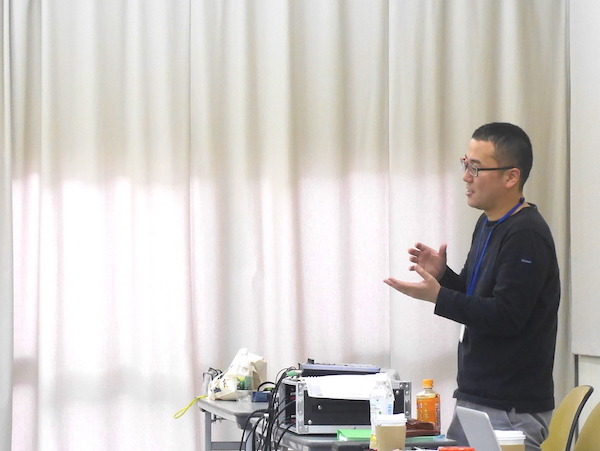
Her real name is unknown in history, but she was the daughter of the court noble and Minister of the Interior, Bomon Nobumasa, who was known as the "wife of Sanetomo." Given that, one would imagine her screaming in a feminine voice, befitting a member of the imperial court, in any situation... but the voice that was squeezed out by Tsunaguchi Yoshika, who played Azusa, after receiving advice from her, felt like a human scream that could be heard in any era, without any historical coloring.
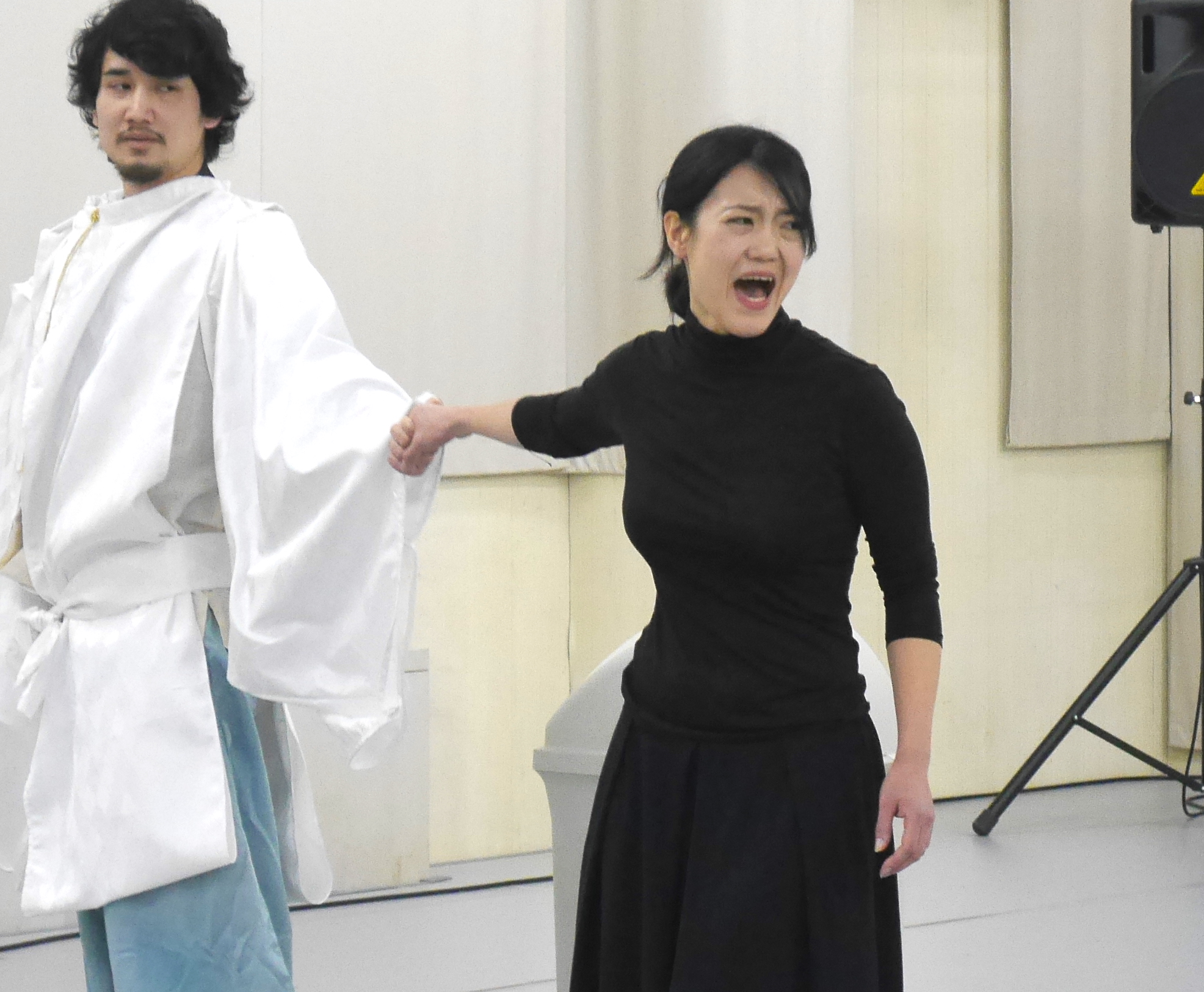
The rehearsal, which I watched for about two hours, was full of energy from start to finish. The play is performed by young theater people and aspiring theater students who were selected through public auditions, mainly from Kanagawa. Naturally, some will see this play as a big step towards their future. Their carefree ambition, passion and dedication for theater, and overflowing youth. Nakano's direction accepts these things and guides them in the right direction, improving the play's quality. The script is wonderful, of course, but the impact of this rehearsal also seemed to come from the clash of these two energies. I can't wait until the performance on the day.
After the viewing, Nakano gave us an explanation of the play, which I will introduce here. I will not go into the details of the play, but Nakano also said that the play is a "story of hope."
"'Senatomo's Voyage' was published in 1973. The 1970s was a time when young people were frustrated with political movements and found it difficult to find hope. 'Senatomo's Voyage' is set in the Kamakura period, but the content is actually linked to the historical background of the time of its premiere. Furthermore, I believe that there is a close connection to the trajectory of the play's author, Masakazu Yamazaki, who, as a researcher, has sometimes had an influential voice in the Japanese government. I will leave out the details, but at its core, the play deals with friction between people in society and the delicate feelings of young people living in suffocating conditions. "It is a masterpiece that continues to inspire us even today, after all this time has passed. Above all, the story is full of great hope. Historically, Sanetomo is seen as a passive man with no political talent who only wrote poetry, and his shipbuilding business, a major theme of the play, is often seen as a crazy move. But the Sanetomo in this play is a dreamer who places his hopes in shipbuilding, and a man who lives life to the fullest, staying positive despite being at the mercy of others. That's why I want young people to watch it, and I believe it is a moving human drama before it is a historical piece."
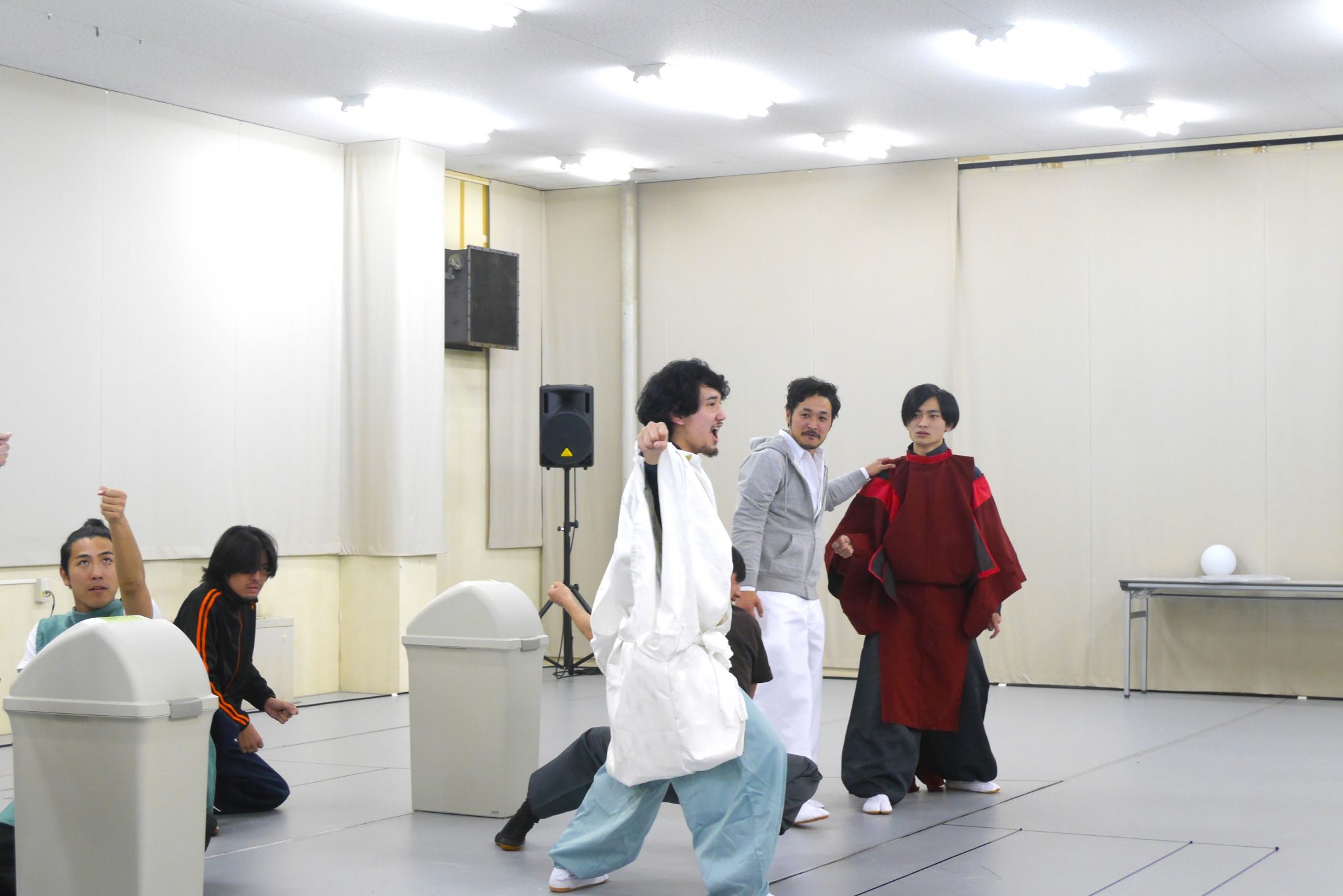
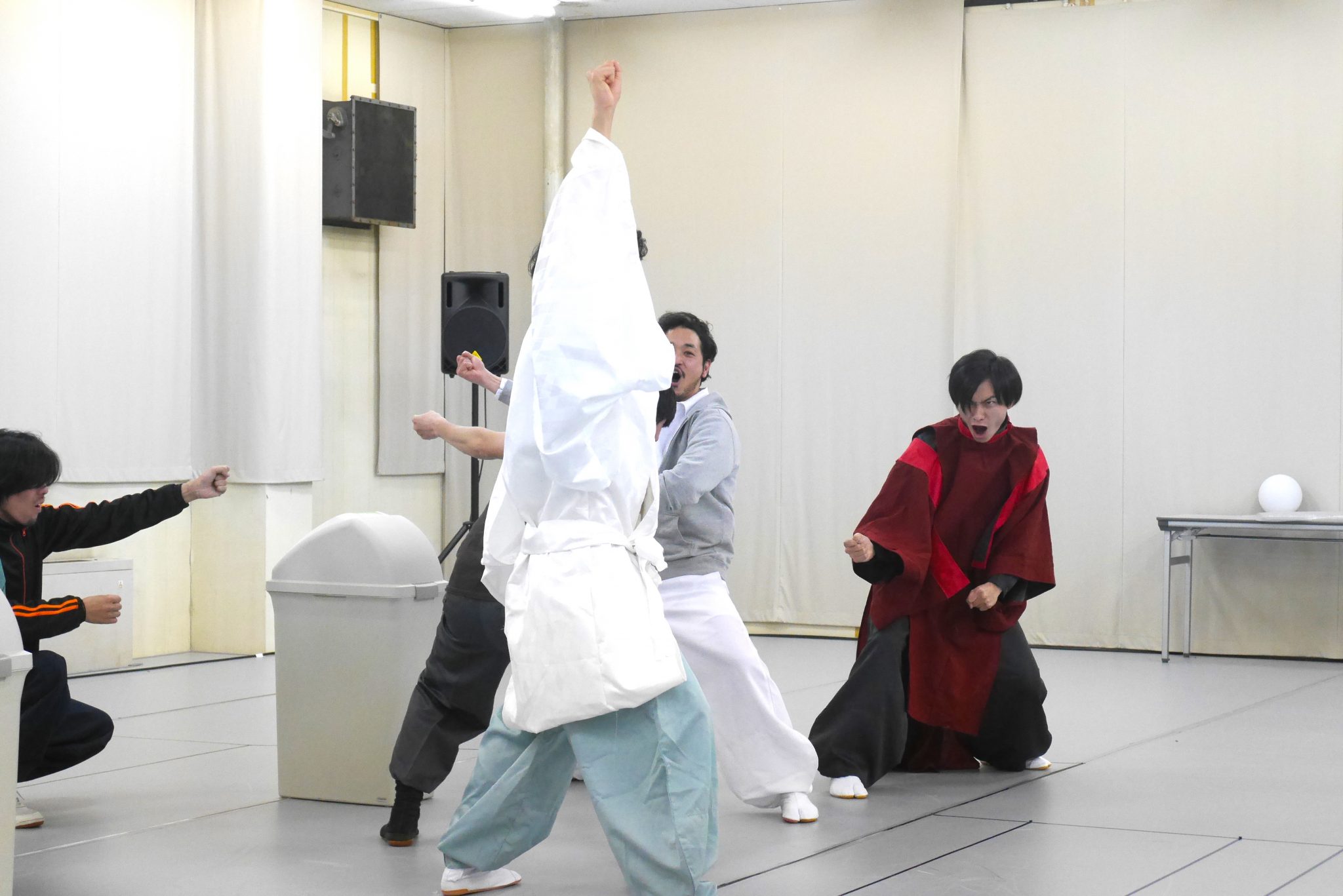
Nakano also had this to say about the event:
"I would also like people to note that the play will be held in Tahara, Hadano, where the grave of Minamoto no Sanetomo is located. There is an actual grave dedicated to Sanetomo very close to the stage, so it provides the perfect environment to remember Sanetomo and let your imagination run wild about what kind of person he was. And then... soba noodles (laughs). There is an incredibly delicious soba restaurant near Tahara Furusato Park, where the play will be held. I hope people will enjoy the beautiful spring scenery of Tahara, surrounded by rural woodlands, the delicious soba noodles, and the outdoor theater that can only be performed in this location."
From history to philosophy. Come enjoy this masterpiece that can be enjoyed from each individual's perspective in the land associated with Sanetomo.
Finally, I had the opportunity to interview three people: Yuji Shimizu, the lead actor who plays the role of Minamoto no Sanetomo, Shinya Kumano (Theater Company Karasemi☆), who plays the role of Hojo Yoshitoki, and Hisanori Shimabara (Magcal Performing Arts Academy), who plays the role of Kugyo. I will conclude my report by asking about their enthusiasm for the performance, which is approaching one week.
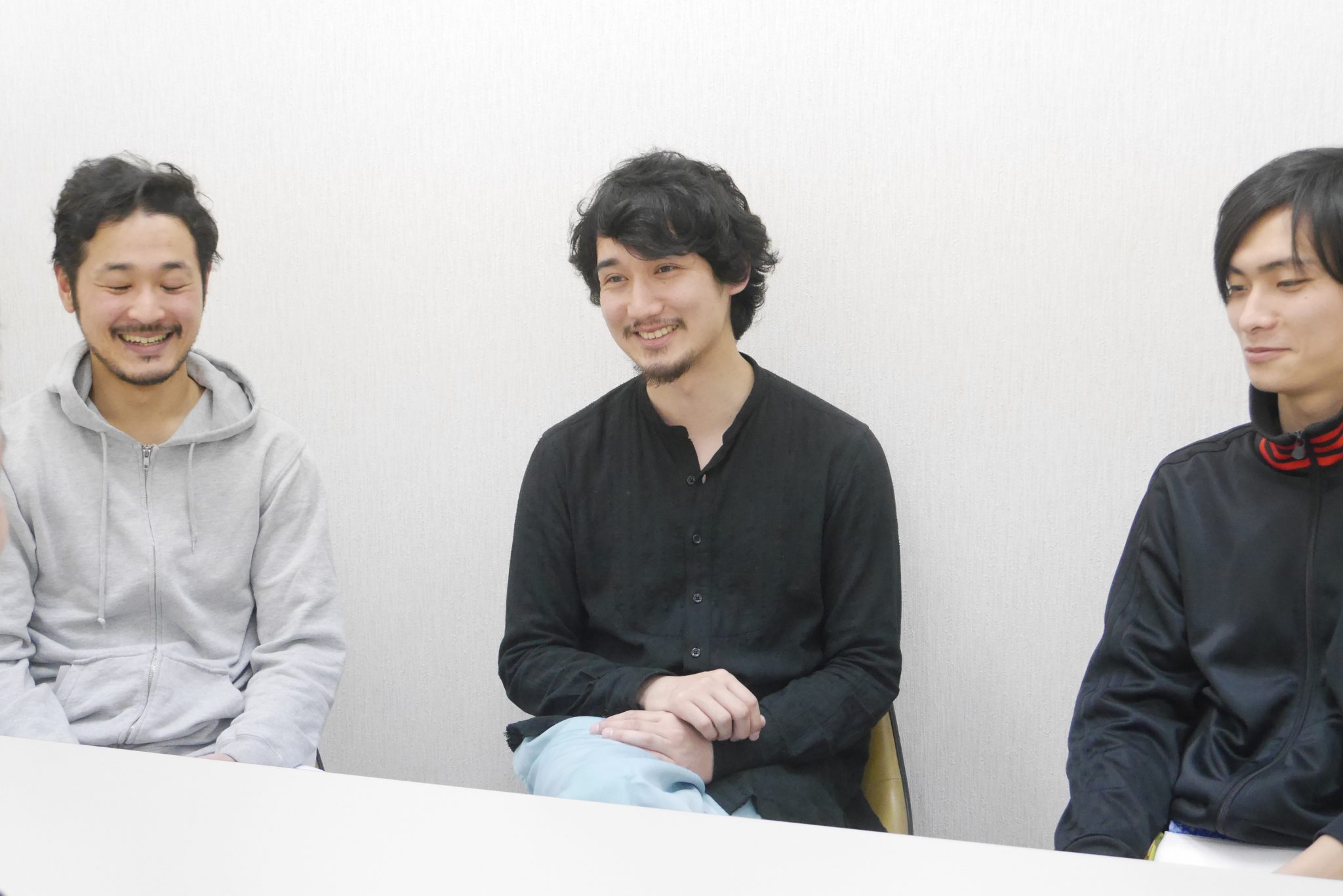
-I heard that all the members were selected through public auditions. What was it about this performance that attracted you?
[Kumano] It's an outdoor play. In addition to outdoor plays, the theater company I belong to, Kara Seminar☆, has also performed in tents. Compared to performances in theaters, outdoor plays have a more lively feel and a stronger sense of unity with the audience, which is interesting and I'm completely captivated by them. That's why I wanted to participate in this performance. And the wonderfulness of the performance location. The story of Sanetomo will be performed next to the grave of Minamoto no Sanetomo. I thought this was a rare opportunity.
[Shimizu] Unlike Kumano-san, I had no experience in outdoor theater. So I thought it would be a good experience for me as an actor. Also, I'm from Hadano. When I was little, I visited the grave of Minamoto no Sanetomo as part of my classes. Those memories, plus the interesting script, were a big motivation for me. Each character is distinctive, full of ambition, and perhaps a little out of touch with the world. I was attracted to these characters and really wanted to take part.
[Shimabara] I usually appear in musicals. While studying at the Magcal Performing Arts Academy, I participated in musical performances that were held regularly. Then, the person who wrote and directed one of the performances was a student of Tsuka Kohei, and I had the opportunity to hear Juro Kara's stories from him. Each one was very interesting and stimulating, and I thought I would like to appear on stage other than musicals. And this time, I will be directed by Nakano, who studied under Kara. This is what I personally feel is attractive (laughs). I am still new to acting, and Shimizu and Kumano are seniors that I respect. Actually, I'm a little nervous right now.
[Shimizu & Kumano] (laughs).
-Are there any differences between the musical and this performance?
[Shimabara] The sense of speed and timing are completely different. Also, there are a lot of long lines. And the biggest difference is that it's an outdoor play. I'm trying to speak in a way that can reach the audience even outdoors, while working hard to get intonation. There are still many obstacles to overcome, but I'm receiving advice from Nakano-san and kind words from my seniors, so I'm just concentrating on doing my best to get the job done.
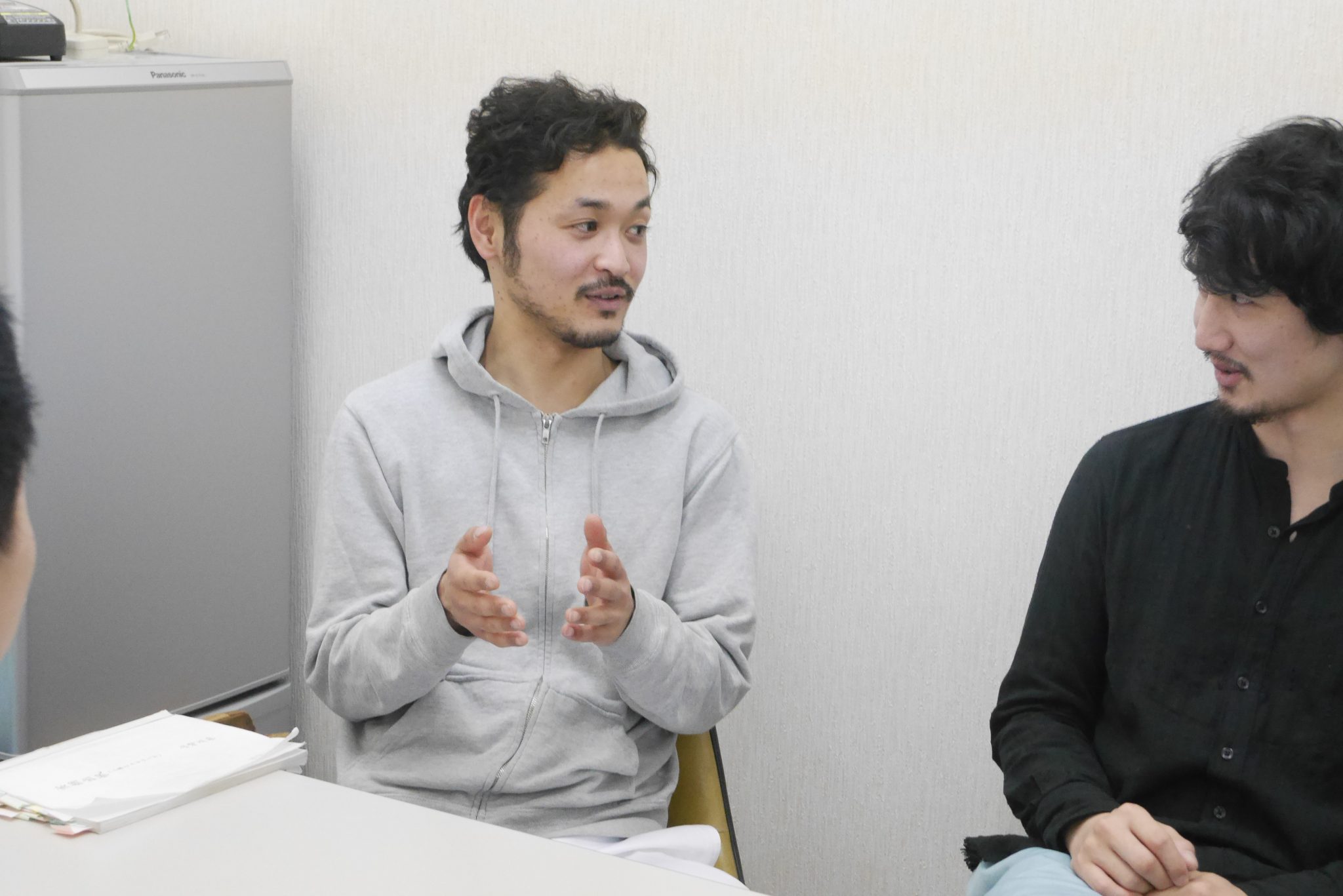
[Kumano] Shimabara-kun is very good at putting passion into his lines at a certain moment. Maybe it's because he has experience in musicals, where he pinpoints emotions to match the music. Also, I've noticed since the beginning of rehearsals that he is practicing with great passion. Last week, after the break, his acting had improved dramatically. It was completely different.
[Shimizu] Ah, that's true. In terms of my role, I don't have many scenes where I interact with Shimabara-kun's Kugyo, but even listening to him from the sidelines, I can clearly feel that he has a solid voice and that each and every line has come together perfectly.
[Shimabara] Nakano-san gave me the advice, "Understand not only your role, but also the lines and gestures of those around you. If you do that, your acting will come naturally." So during breaks in rehearsals, I paid attention to things other than my own role and read the script all the time.
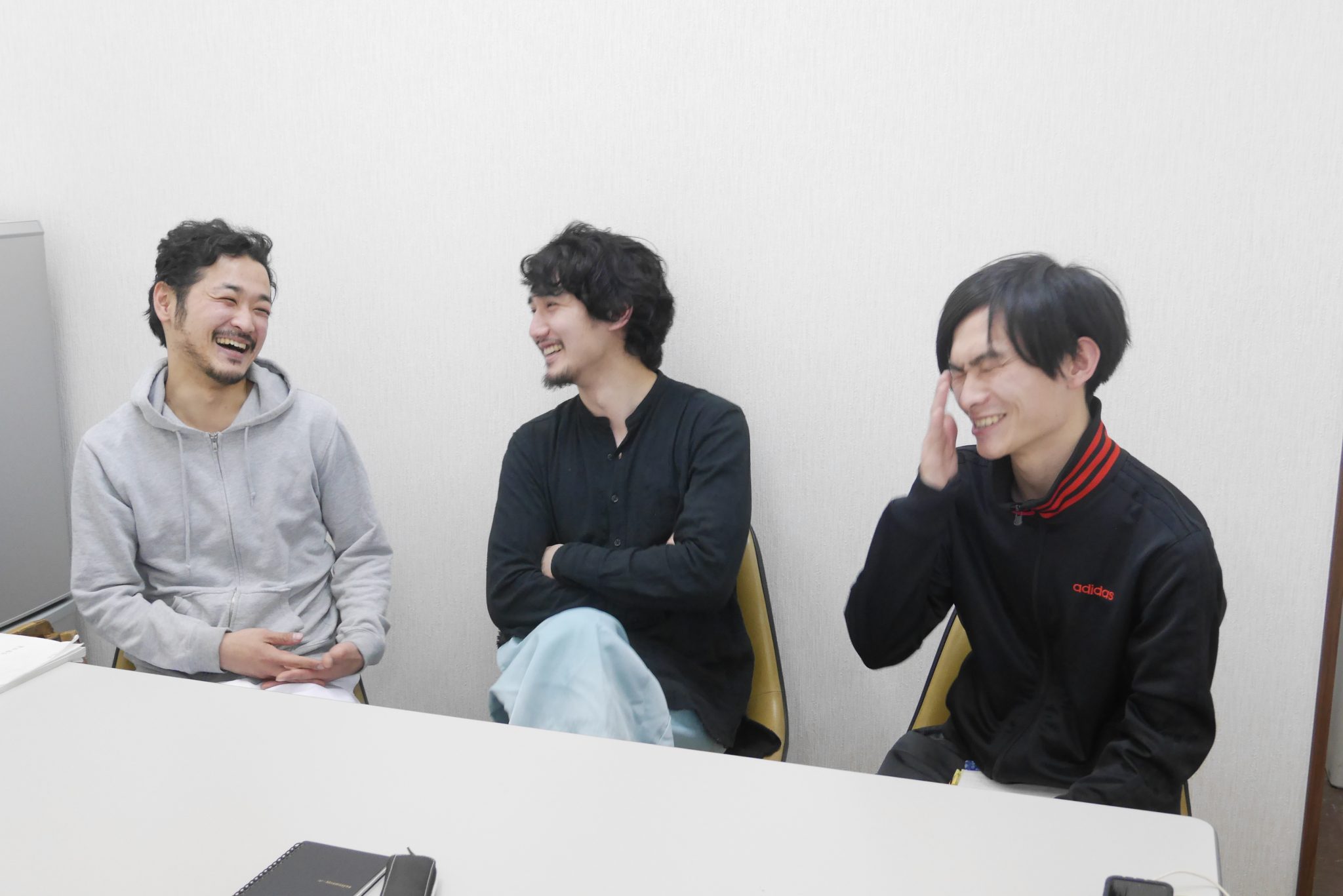
-Please tell us about the characteristics of Nakano's directing and any episodes from his acting instruction.
[Shimizu] It's not the actors' performance that counts, it's the script that counts. What does the script want to convey? Rehearsals begin with that understanding. So, from our perspective, it's very easy to act. We can concentrate without thinking about unnecessary things.
[Kumano] What really impressed me was that "Interpretation and analysis are different. What is needed first is analysis." Don't act based on your own interpretation, that is, don't act based on the atmosphere. Instead of acting in a way that makes you seem happy or sad, you should analyze why that scene is in the script, why are those words being spoken, and then act. This overlaps with what Shimizu said earlier, but you should first understand what the script wants.
[Shimizu] In my experience, he is a rare type of director. Nakano's directing method, which puts the script first, seems very logical.
[Shimabara] What made a big impression on me was the instruction I received: "Don't create your acting from inside." "Spit it all out." I thought I was being conscious of that, but Nakano's words took me by surprise. I think my acting has clearly changed since then. It's become much easier to act.
-It's now less than a week until the performance. Please give us a message for the audience.
[Shimabara] I play the role of Kugyo. He is the man who assassinates Sanetomo, but if you follow the events, Kugyo is also a tragic character who is at the mercy of the world and people. I hope you will pay attention not only to the work itself, but also to the fluctuations in Kugyo's emotions.
[Kumano] Although the subject matter is Sanetomo and the Kamakura Shogunate, it is a wonderful play that anyone can enjoy, not just history fans. I hope many people will come and see it. Also, throughout the story, the question "What kind of person was Sanetomo?" is asked, and I hope everyone will enjoy that part as well. Starting with Hojo Yoshitoki, who I play, we all talk about Sanetomo. Sometimes through a certain character, sometimes looking at the whole picture, I hope that the audience will pursue the image of Sanetomo together with us, the performers. I also hope that everyone will pay attention to the transformation of Yoshitoki, the actual ruler.
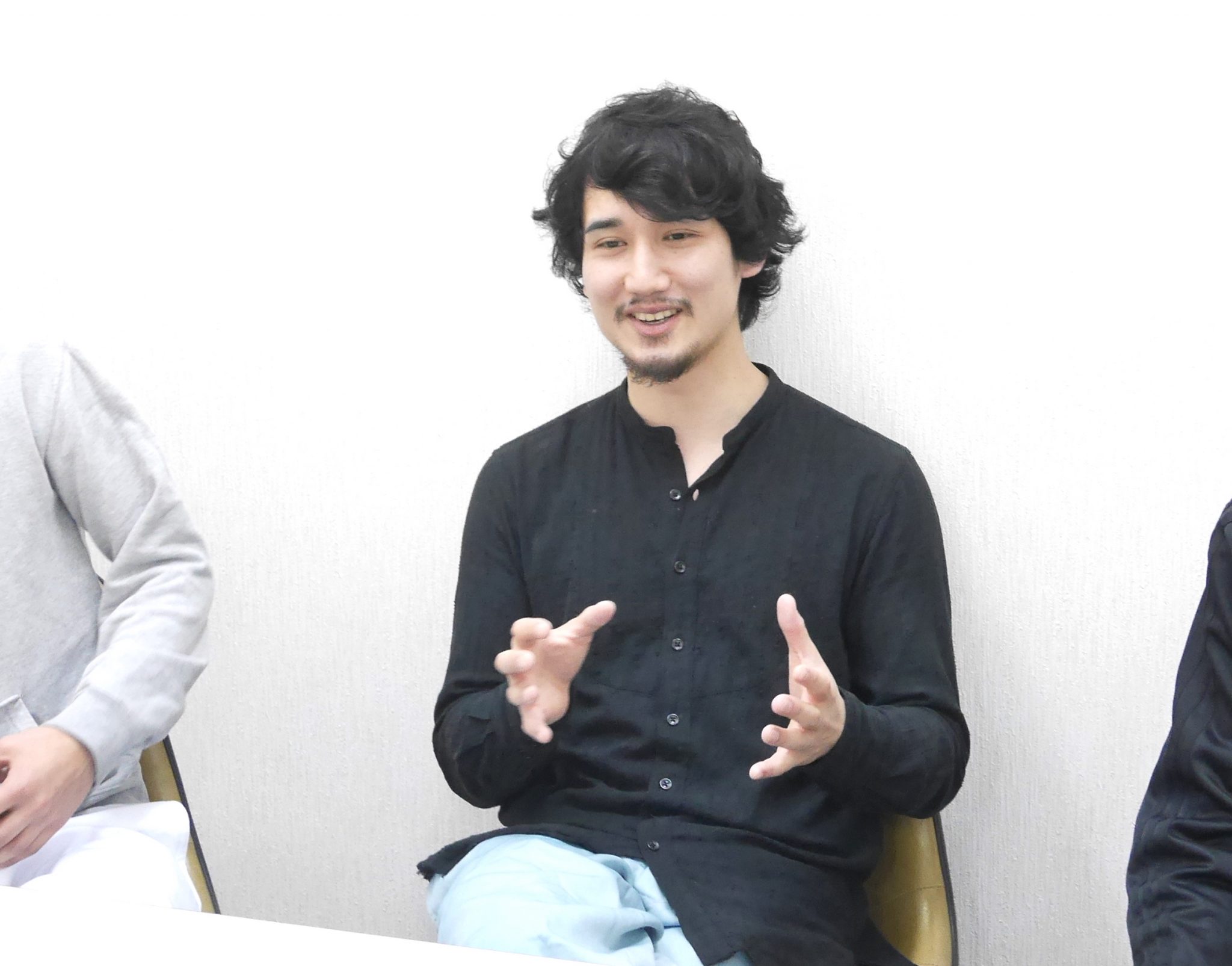
[Shimizu] There are two things to look out for in Sanetomo. One is the charm of the character, as Kumano-kun mentioned. Sanetomo has an established image of being a poet and a man with no political ambition, but in "Santomo's Voyage" you can see a side of him that overturns that image, and I placed emphasis on that point in my character development. I hope you will enjoy the young general who easily surpasses the established image. The other is about his "way of life." I think there is a philosophy in Sanetomo's way of life depicted in the play that is relevant to the present day. If we change our perspective a little, we can enjoy life more richly. I feel that Masakazu Yamazaki put such questions into "Santomo's Voyage." It is not only a historical piece and a human drama, but also a play that teaches us how to live, so I hope you will enjoy the performance from any perspective.
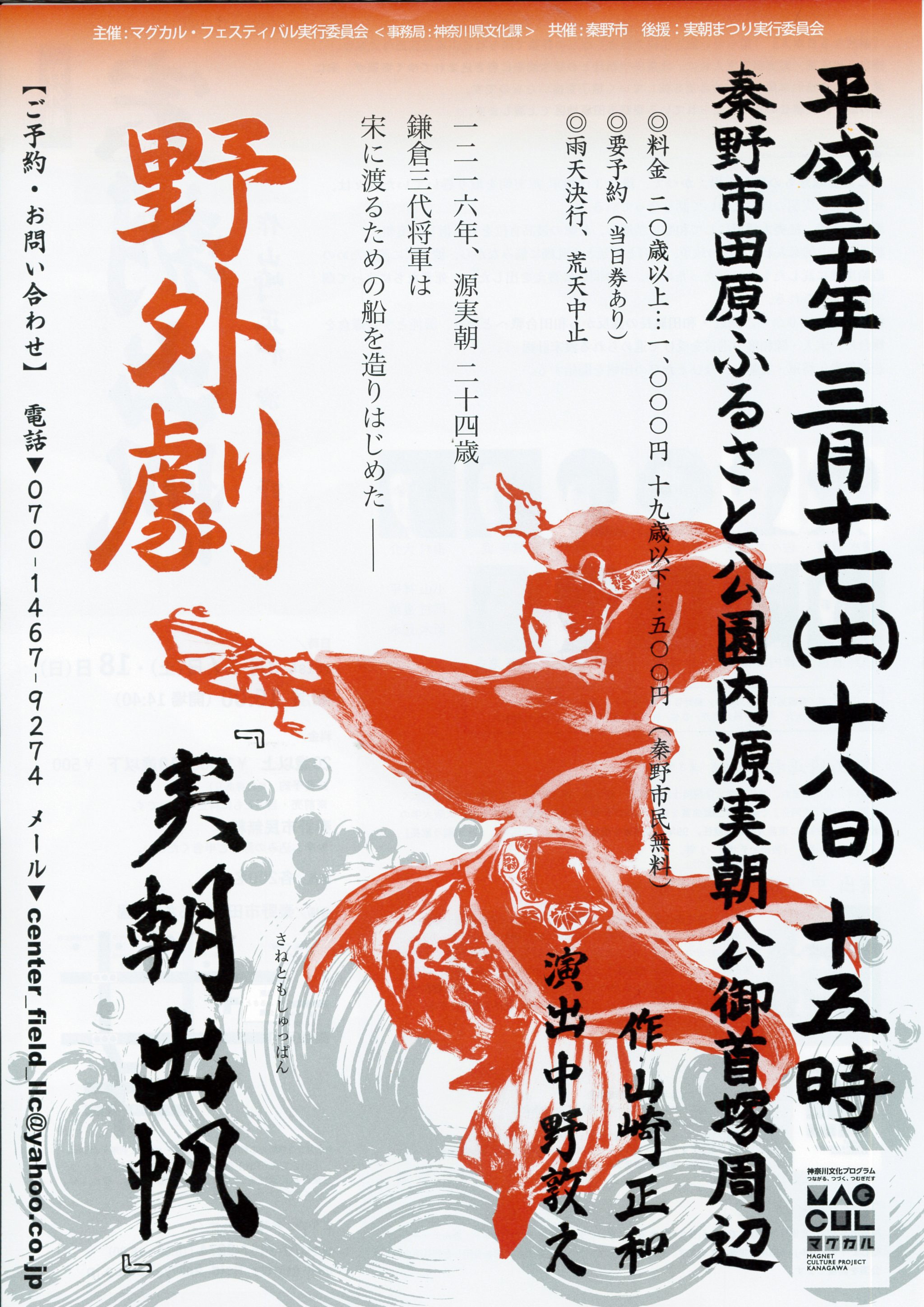
========================
Outdoor play "Satomo's Departure"
Date and time: March 17th (Sat) and 18th (Sun), 2018
Start time: 15:00~ (venue opens at 14:40~)
*Will proceed if it rains, but will be canceled if it is stormy
Admission fee: 1,000 yen for those 20 years old and over, 500 yen for those 19 years old and under
Free for Hadano residents
*Reservation required (same-day tickets available)
*The price is the same for both advance and same-day purchases.
Capacity: 200 people on both days
Venue: Tahara Furusato Park, Hadano City
Access: From Hadano Station on the Odakyu Line, take the bus bound for Fujidana (Hata 23) or the Hadano Station Circular Bus (Hata 26 and Hata 27), get off at "Nakaniwa" and walk for 3 minutes.
Reservations and inquiries:
TEL: 070-1467-9274
MAIL:center_field_llc@yahoo.co.jp
